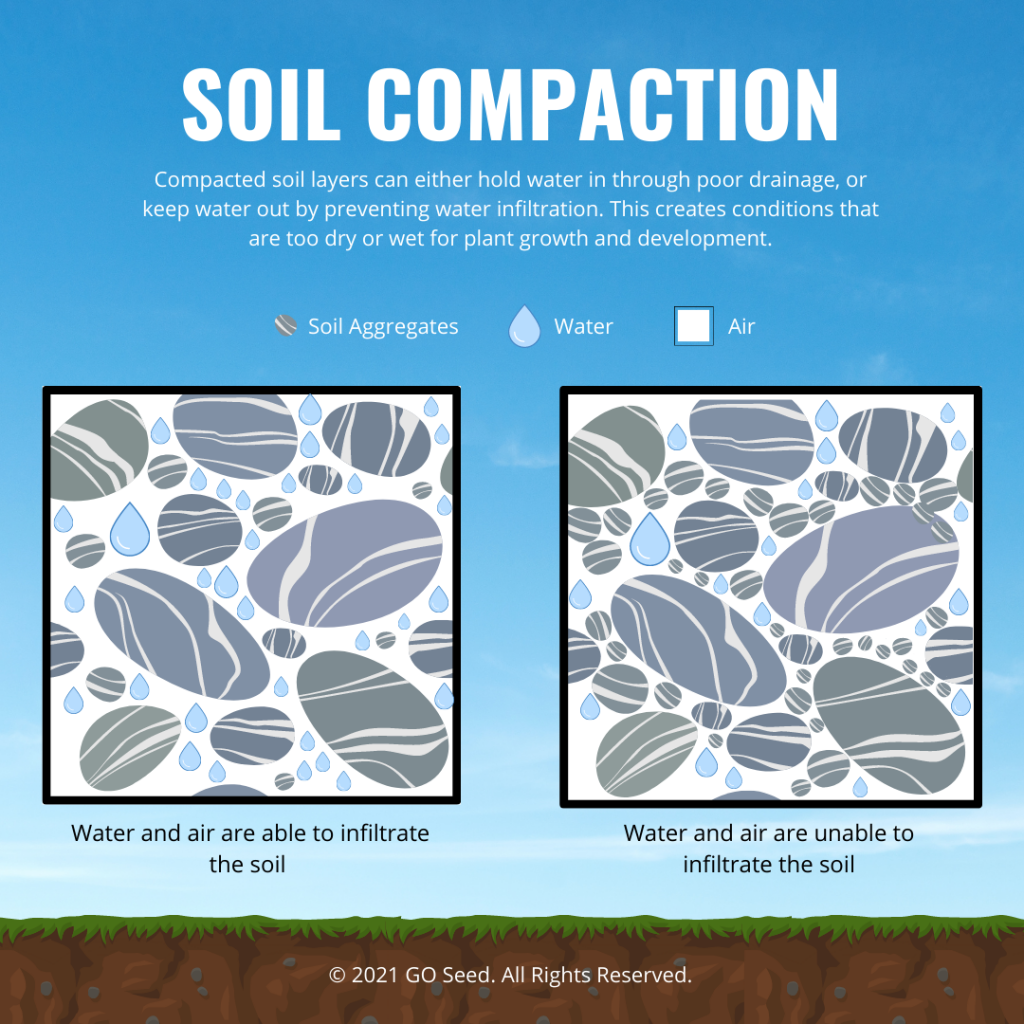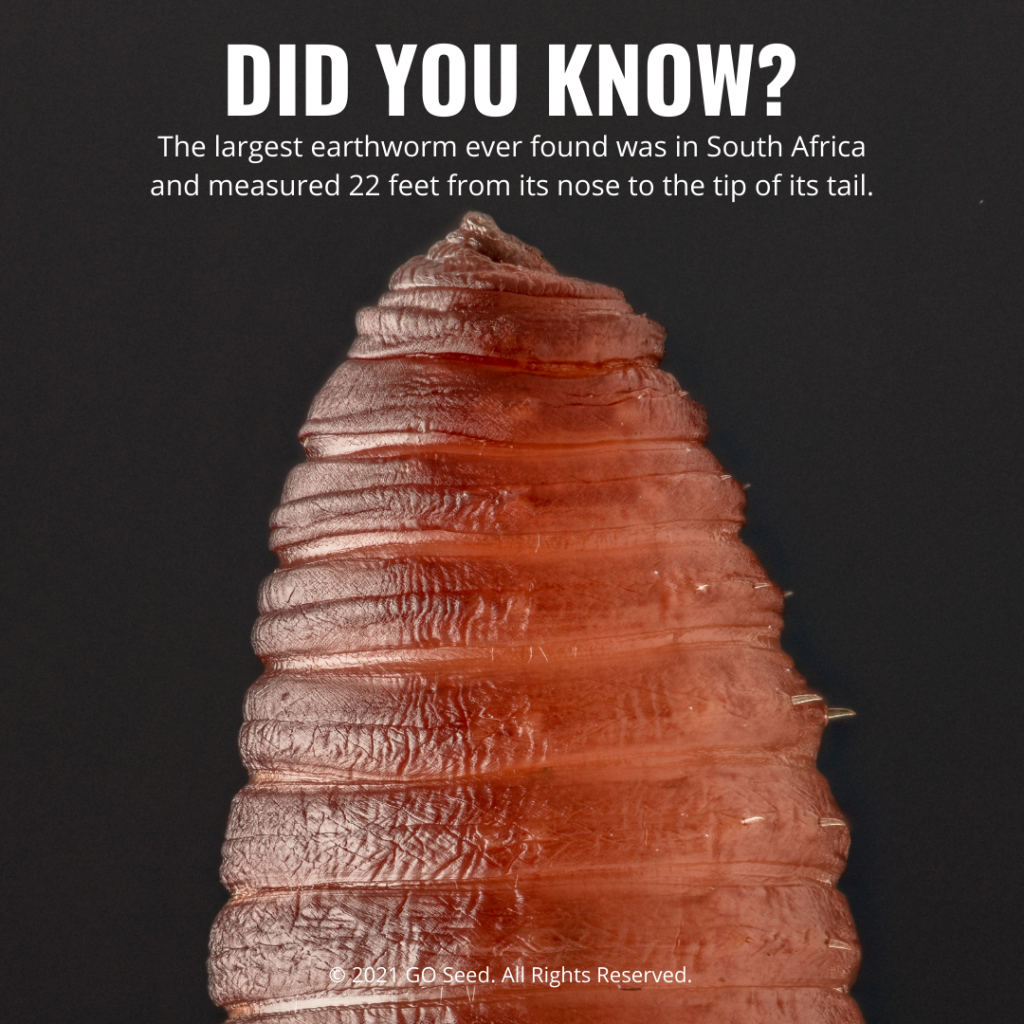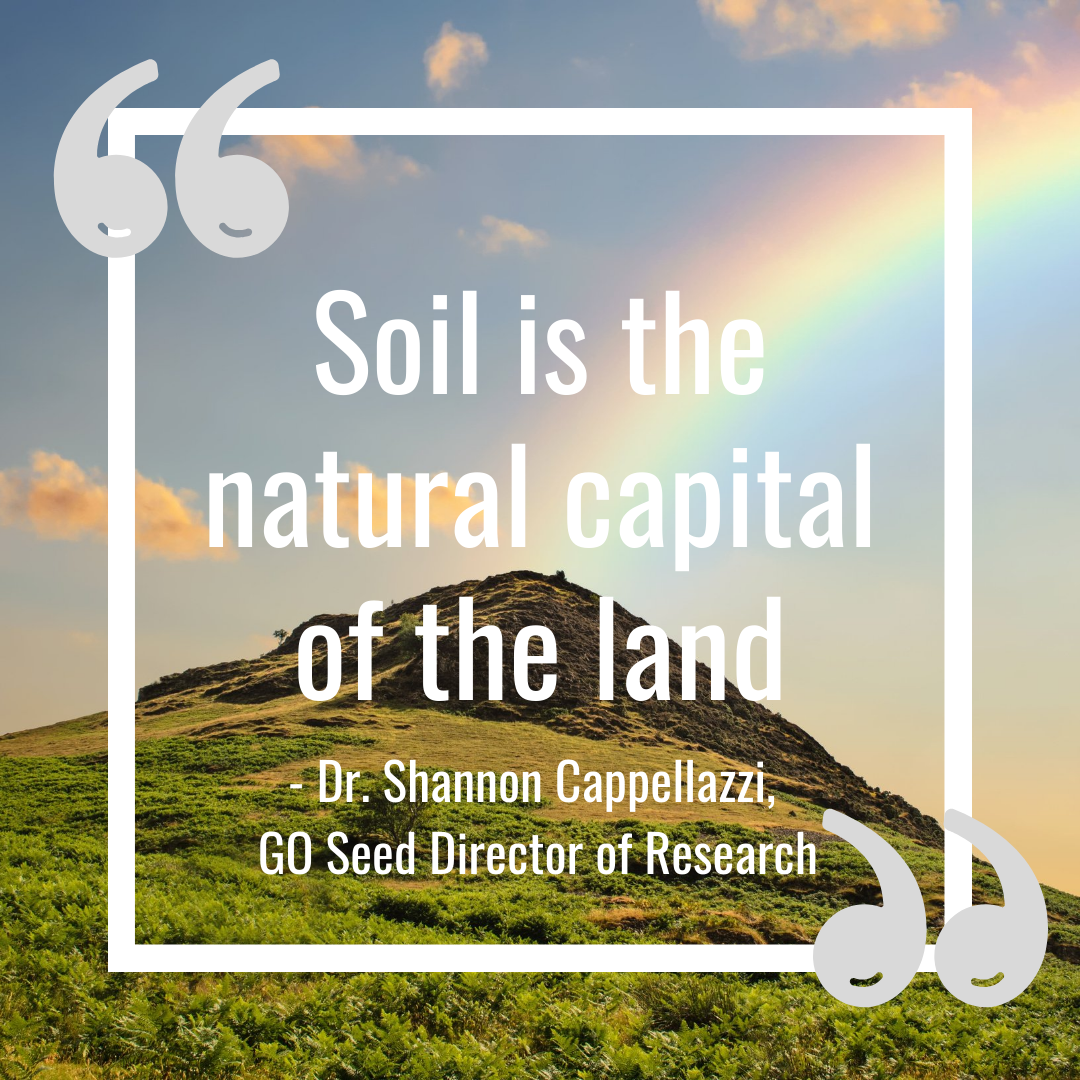In part two of this two-part series on the economics of cover crops, we explore how a holistic approach to taking care of resources comes with long-term gains. Read part one here.
There are no “quick fixes” when it comes to the health of soils, the benefits take more than overnight to show up. While it takes time and deliberate care to learn how to enhance resources holistically within your own system, the general principles are relatively simple and can be significant cost savings.
“Soil is the natural capital of the land,” explains Dr Shannon Cappellazzi, GO Seed Director of Research. “By making the investment in soil health, not only are you making an impact on all of the downstream ecosystem services that are related to soil functions, you are also regenerating the land for continued agricultural production.”
In this pursuit, the right cover crops can make a monumental difference for crop and livestock systems. Below are a few ways to cover crops to enhance soil health, which is all about the capacity of the soil to function as a vital living ecosystem.
Dealing With Compaction For Long-Term Gains
Soil compaction is a common issue for row crop and forage producers resulting from continual hoof and equipment traffic. According to the University of Georgia Extension, compaction tends to affect the first three to four inches of topsoil for pastures and hayfields. This falls into the zone that is crucial for root growth and movement necessary for maximal nutrient and water absorption.
Compaction impacts the physical attributes of the soil by reducing the pore space necessary for air, water, and nutrient movement. The biological aspect – including fungi, microorganisms, and earthworms – can be adversely affected as well.

“Especially in row crop systems, the best way to maintain a healthy, productive, functional soil is to have living roots in the ground for as much of the year as possible,” explains Cappellazzi. “As plants photosynthesize, they send a lot of that carbon (30-70%) they capture down through the roots.”
A diversity of crops and rooting structures during and outside of peak grazing or row crop season can help nurture a balanced community of bacteria, fungi, arthropods, and earthworms in the soil. This is important because it is this whole range of organisms working along with plant roots that actively control building soil aggregates.
“This active process creates large pore spaces and can start to remediate soil compaction. Aggregate structure has an influence on water moving into and being stored in the soil, as well as oxygen availability for plant roots and other soil organisms,” explains Cappellazzi.
“This provides a positive feedback cycle by allowing the organisms to be better at their jobs and build even better intricate underground architecture which enhances the soil’s ability to perform the functions we need as a society and as agricultural producers.”
Tillage has long been thought of as is a remedy for compaction, but it can be more detrimental than beneficial, especially in areas with heavy clay-based soil types by creating serious tillage pans.
The financial cost of using equipment is also notable. According to the University of Minnesota, a single pass of tillage equipment can cost $14 to $21 an acre.

Cover Crop Strategies outline three species that are specifically good for fields suffering compaction. Oats, for example, can help build up the soil’s organic matter and fit in well with many other species. A robust legume like red clover, with its hardy and prolific growth, is a great tool for building up the soil.
Strong taproots, as found in oilseed radish, are also prime tools for battling compaction. Oilseed radish has roots that can penetrate 10 inches deep and break through some very tough soils.
Natural Nutrient Cycling
That soil organic carbon that everyone seems to be talking about is important because it is what feeds the microbial community that also provide the service of cycling mineral and organic nutrients, making them available to plants.
Active roots in particular have an impact on soil fertility. The sugars and other carbon compounds that are pumped through the roots into the soil feed the microbial community. This carbon is used as food and energy so they can grow and reproduce. As they do this, they cycle nutrients, turning soil organic matter into plant-available nutrients. Legume crops in particular are known to make a lot of nitrogen available to subsequent crops.
This is because they form symbiotic relationships with rhizobia bacteria who take nitrogen from the air and transform it into plant-available forms, referred to as nitrogen fixation. Many crops also form associations with mycorrhizal fungi which trade phosphorus, water, and likely other nutrients to the crop in exchange for these carbon compounds fixed by the plant through photosynthesis.
“Another way that cover crops can impact fertility is by reducing nutrient leaching through the soil profile,” says Cappellazzi. “They can take off-season, soluble soil nutrients into their biomass which can be released in the following season during decomposition of the cover crop while the cash crop is growing.”
Providing the habitat requirements of the soil organisms, therefore, not only enhances nutrient use efficiency and can decrease fertilizer costs, it can also have a positive societal impact by decreasing nutrient leaching into the ground and eventually surface waters.

Enhancing water infiltration
With ample ground cover and an extensive root system, cover crops are a great way to help promote water flow in the soil.
“After the cover crop grows and dies, it leaves behind root channels,” explains Jim Johnson, Senior Ag Consultant, at Noble Research Institute. “These create pore space for water to soak into the soil.”
Cover crops can also serve as a “buffer” against runoff from manure spreading and other nutrients. Research from the University of California-Davis found that cover crops and vegetative strips were effective at reducing excessive nitrogen, potassium, phosphorous, and pathogens from pasture.
Many cover crop varieties have extensive root systems that help lock in the soil and stabilize loose particles that might otherwise be washed away. They can also help boost organic matter and create a habitat for earthworms and microbes.

“This soil biology creates good soil aggregation. Which also leaves pore spaces between aggregates, so that water can infiltrate and soak into the soil,” adds Johnson.
Maximizing what is important to your system
There are multiple ways that cover crops can help alleviate expenses by providing long-term benefits that will contribute to prolific pastures and cropping systems for years to come.
“Cover crops can help us maximize or at least increase the four-ecosystem process by positively supporting water and mineral cycles, energy flow, and community dynamics of involved species,” says Johnson. “Improving these ecosystem processes is all good for long-term soil health.”
Each producer should remember their own set of goals, Cappellazzi notes, and consider details like local climate, soil, and production system to choose the right cover crop.
“Rather than considering the change in yield, we want to shift producer’s focus to a change in profit,” says Cappellazzi. “If you get 5% less yield, but you have a 50% reduction in your costs related to fertilizer or chemicals or fuel or equipment, you can make a lot more money. Folks who follow the principles have shown excellent increases in their profit per acre when using the right cover crop as part of their production system to meet their goals.”
Editorial Notes
Cover Crop Corner is an educational column from the forage application company GO SEED and is free for print or digital distribution by media outlets. We ask that attributions be made to GO SEED when published. For more information or to be added to the distribution list, please email info@goseed.com.

